Adipose tissue is a specialized type of connective tissue Connective tissue Connective tissues originate from embryonic mesenchyme and are present throughout the body except inside the brain and spinal cord. The main function of connective tissues is to provide structural support to organs. Connective tissues consist of cells and an extracellular matrix. Connective Tissue: Histology that has both structural and highly complex metabolic functions, including energy storage, glucose Glucose A primary source of energy for living organisms. It is naturally occurring and is found in fruits and other parts of plants in its free state. It is used therapeutically in fluid and nutrient replacement. Lactose Intolerance homeostasis Homeostasis The processes whereby the internal environment of an organism tends to remain balanced and stable. Cell Injury and Death, and a multitude of endocrine capabilities. Multiple hormones Hormones Hormones are messenger molecules that are synthesized in one part of the body and move through the bloodstream to exert specific regulatory effects on another part of the body. Hormones play critical roles in coordinating cellular activities throughout the body in response to the constant changes in both the internal and external environments. Hormones: Overview and Types, growth factors, and cytokines Cytokines Non-antibody proteins secreted by inflammatory leukocytes and some non-leukocytic cells, that act as intercellular mediators. They differ from classical hormones in that they are produced by a number of tissue or cell types rather than by specialized glands. They generally act locally in a paracrine or autocrine rather than endocrine manner. Adaptive Immune Response are expressed by adipocytes and their associated stromal cells and macrophages Macrophages The relatively long-lived phagocytic cell of mammalian tissues that are derived from blood monocytes. Main types are peritoneal macrophages; alveolar macrophages; histiocytes; kupffer cells of the liver; and osteoclasts. They may further differentiate within chronic inflammatory lesions to epithelioid cells or may fuse to form foreign body giant cells or langhans giant cells. Innate Immunity: Phagocytes and Antigen Presentation. There are three types of adipose tissue, white adipose tissue, brown adipose tissue, and beige or “brite” adipose tissue, which is a transitional form. Brown adipose tissue is present mostly in the fetus and in young children, and its main purpose is thermogenesis. Small deposits of brown adipose tissue persist into adult life. White adipose tissue is the major adipose tissue in adults, and it plays a role in several disease states, most notably obesity Obesity Obesity is a condition associated with excess body weight, specifically with the deposition of excessive adipose tissue. Obesity is considered a global epidemic. Major influences come from the western diet and sedentary lifestyles, but the exact mechanisms likely include a mixture of genetic and environmental factors. Obesity, metabolic syndrome Metabolic syndrome Metabolic syndrome is a cluster of conditions that significantly increases the risk for several secondary diseases, notably cardiovascular disease, type 2 diabetes, and nonalcoholic fatty liver. In general, it is agreed that hypertension, insulin resistance/hyperglycemia, and hyperlipidemia, along with central obesity, are components of the metabolic syndrome. Metabolic Syndrome, and type 2 diabetes Diabetes Diabetes mellitus (DM) is a metabolic disease characterized by hyperglycemia and dysfunction of the regulation of glucose metabolism by insulin. Type 1 DM is diagnosed mostly in children and young adults as the result of autoimmune destruction of β cells in the pancreas and the resulting lack of insulin. Type 2 DM has a significant association with obesity and is characterized by insulin resistance. Diabetes Mellitus.
Last updated: Dec 15, 2025
Adipose tissue is a type of loose connective tissue Loose connective tissue Connective Tissue: Histology composed mainly of cells called adipocytes.
Two classic types:
3rd, recently described, transitional type:
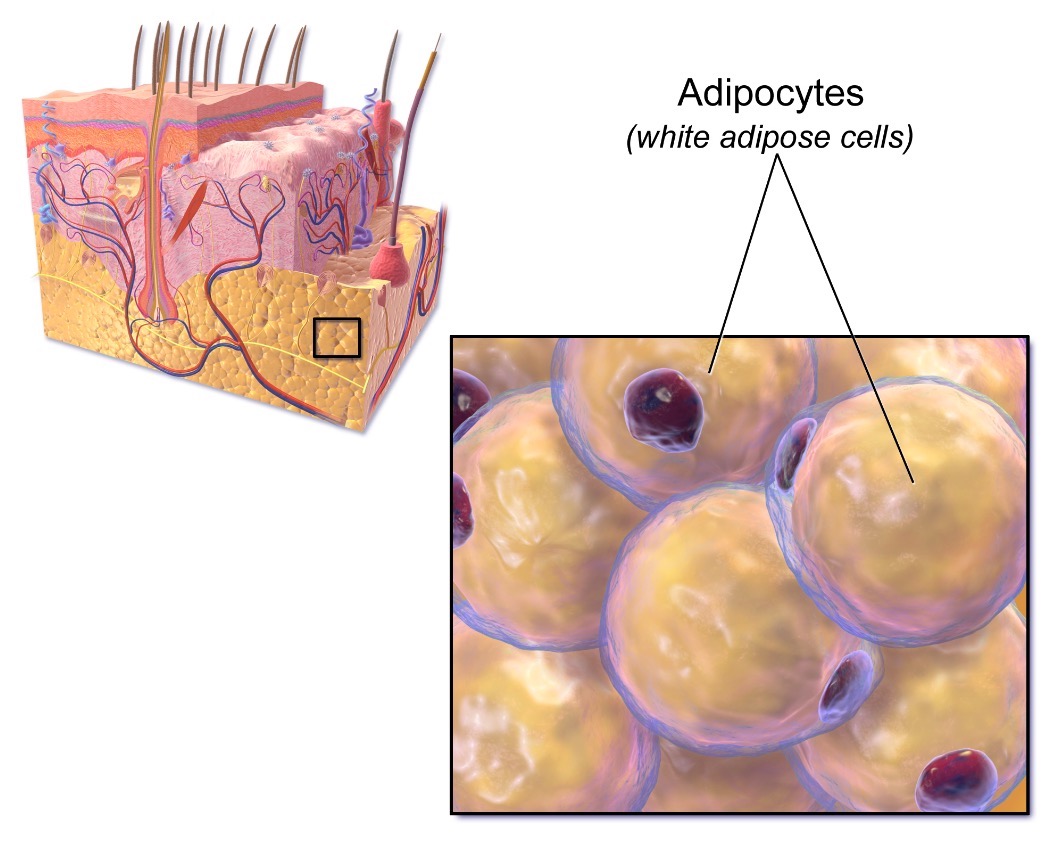
Subcutaneous adipose tissue
Image: “Adipose Tissue” by Bruce Blaus. License: Public Domain, edited by Lecturio.White adipose tissue:
Brown adipose tissue:
Females:
Males:
White adipose tissue:
Brown adipose tissue:
Beige: lighter brown than brown adipose tissue
White adipose tissue:
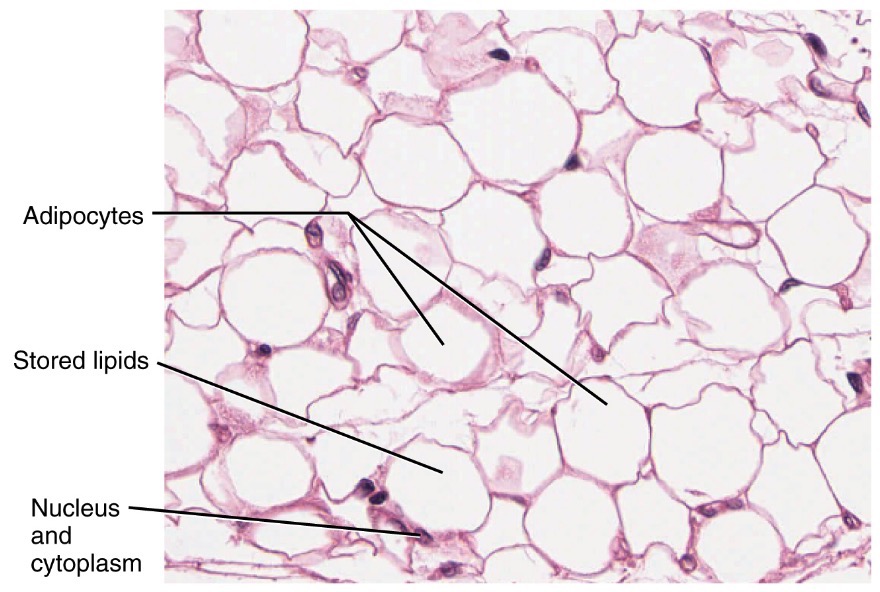
White adipose tissue: cells with flattened nuclei that are located peripherally
Image: “White adipose tissue” by OpenStax College, Anatomy and Physiology. OpenStax CNX. License: CC BY 4.0Brown adipose tissue:
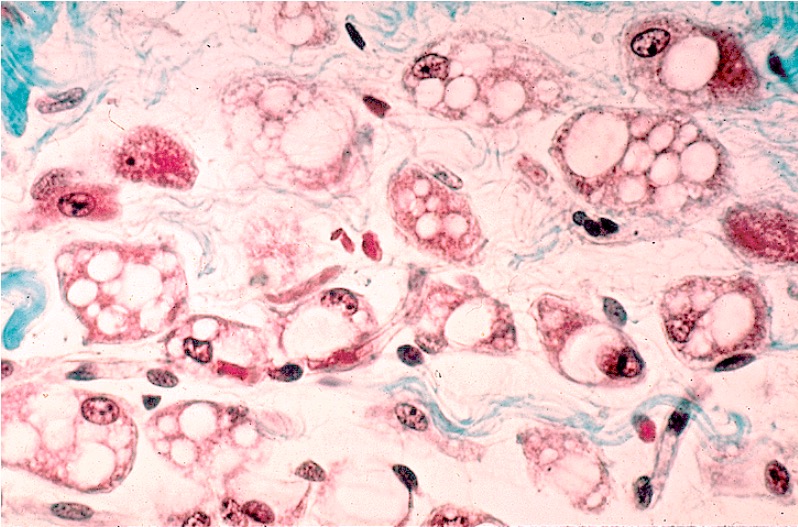
Brown adipose tissue:
Brown adipose tissue contains multivacuolated adipocytes and has a characteristic brown color due to marked vascularization (4–5x more than white adipose tissue) and numerous mitochondria. The adipocytes are smaller than the ones in white adipose tissue and the nucleus is centrally located; white adipocytes are also scattered within normal brown adipose tissue.
Beige fat:
Adipose tissue produces a number of hormones Hormones Hormones are messenger molecules that are synthesized in one part of the body and move through the bloodstream to exert specific regulatory effects on another part of the body. Hormones play critical roles in coordinating cellular activities throughout the body in response to the constant changes in both the internal and external environments. Hormones: Overview and Types and cytokines Cytokines Non-antibody proteins secreted by inflammatory leukocytes and some non-leukocytic cells, that act as intercellular mediators. They differ from classical hormones in that they are produced by a number of tissue or cell types rather than by specialized glands. They generally act locally in a paracrine or autocrine rather than endocrine manner. Adaptive Immune Response.
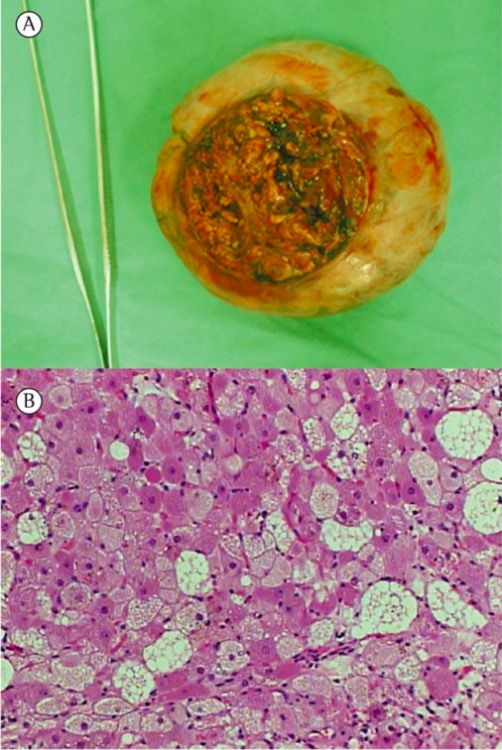
Hibernoma:
A: photograph of a gross specimen, demonstrating a well-circumscribed, encapsulated, soft, brown-to-yellow mass measuring 10 × 9 × 5 cm.
B: Histologically, the tumor consists of 2 tumor cell types: cells with granular intense eosinophilic cytoplasm and clear multivacuolated cells filled with lipid droplets, with no evidence of cellular atypia or mitosis (hematoxylin and eosin staining; magnification, ×200).
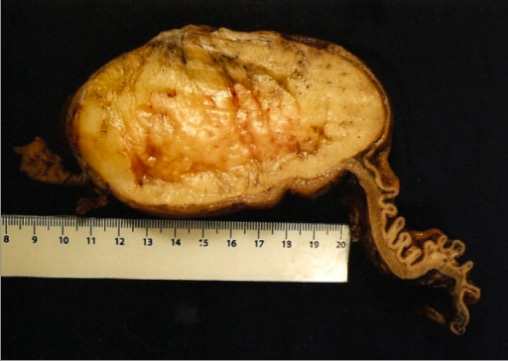
The cut surface of a giant gastric submucosal lipoma, measuring 12 × 8 × 6 cm:
Note the homogeneous yellow surface in this specimen fixed with formalin, which tends to bleach out the colors of tissues. The histologic pattern demonstrated well-differentiated adipose tissue surrounded by a fibrous capsule.
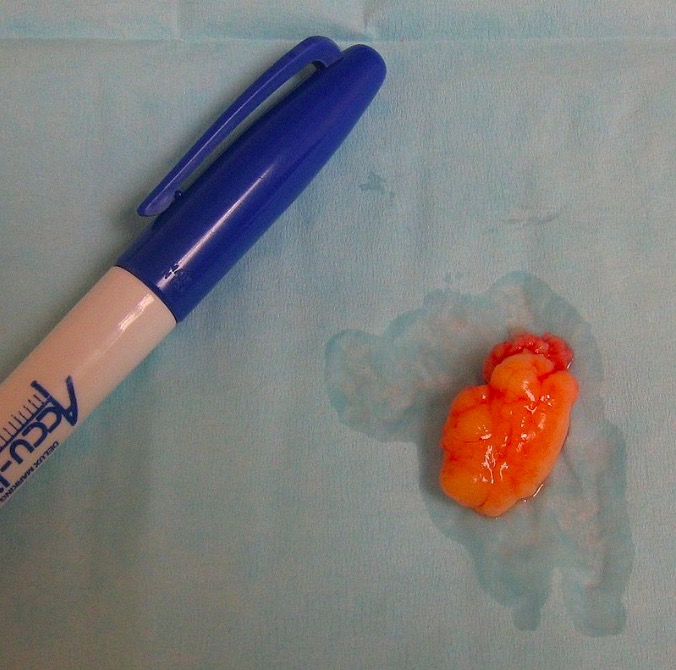
Lipoma:
A small subcutaneous lipoma, removed intact, is shown in its fresh state here, with a thin capsule covering. Note the pale yellow color (compared to normal, nonneoplastic fat).